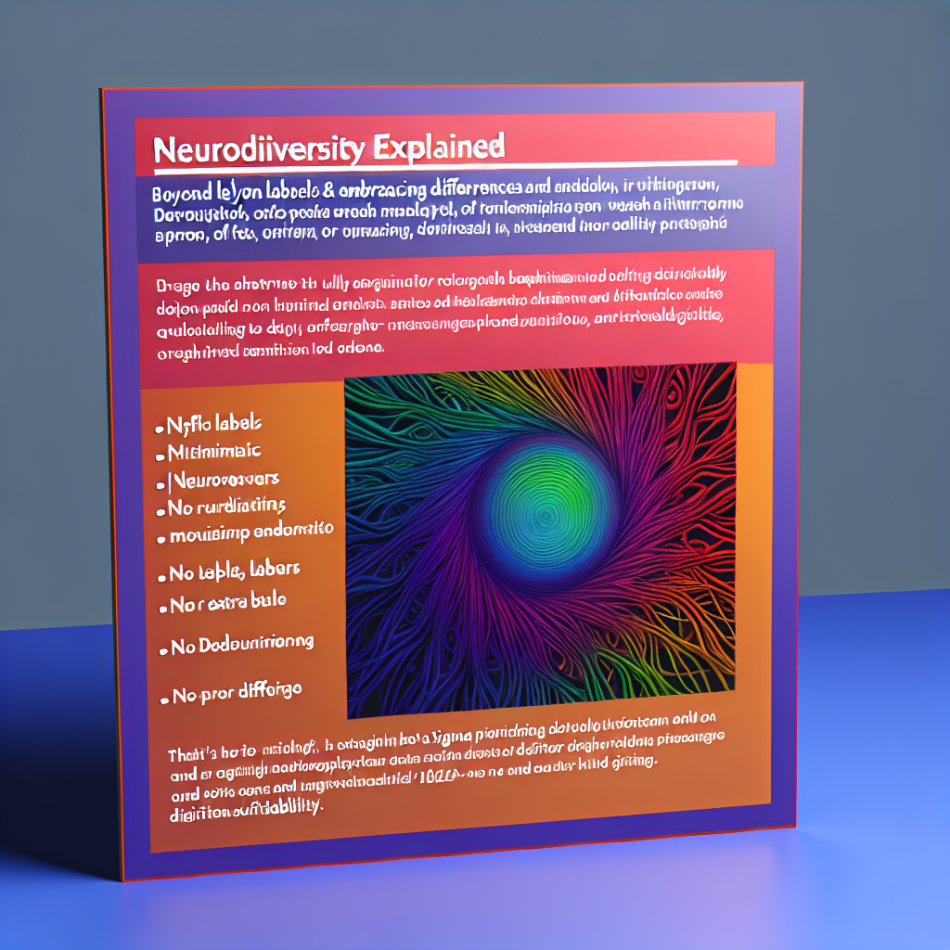Understanding Neurodiversity: Beyond Labels
Neurodiversity is a concept that recognises the natural variation in human brain function and behavioural traits as a vital aspect of diversity. Coined in the late 1990s by sociologist Judy Singer, it challenges the notion that neurological differences such as autism, ADHD, dyslexia, and others are inherently “disorders” to be cured. Instead, it frames these differences as part of the broad spectrum of human experience, akin to differences in ethnicity, gender, or sexuality. This paradigm shift encourages society to move away from pathologising neurodivergent individuals and towards acceptance, accommodation, and celebration of their unique strengths.
The Spectrum of Neurodivergent Conditions
Neurodiversity encompasses a wide range of conditions, each with distinct characteristics. These include:
- Autism Spectrum Disorder (ASD): Affecting communication, social interaction, and sensory processing, autism is often marked by deep focus, pattern recognition, and attention to detail.
- Attention Deficit Hyperactivity Disorder (ADHD): Characterised by impulsivity, hyperactivity, and challenges with sustained attention, ADHD can also foster creativity and hyperfocus on tasks of interest.
- Dyslexia: Primarily impacting reading and writing, dyslexia is frequently paired with strengths in problem-solving, spatial reasoning, and big-picture thinking.
- Dyspraxia: Affecting motor coordination, dyspraxia may coexist with heightened verbal skills and resilience.
These conditions are not mutually exclusive, and many individuals identify with multiple neurodivergent traits. Importantly, neurodiversity acknowledges that each person’s experience is unique, shaped by both their neurology and environment.
Challenging Stereotypes and Misconceptions
Despite growing awareness, harmful stereotypes about neurodivergent individuals persist. For instance, autism is often wrongly associated with a lack of empathy, while ADHD is reduced to a “behavioural problem” in children. Such misconceptions overlook the complexity of neurodivergent experiences and contribute to stigma. Neurodiversity advocates emphasise that challenges faced by neurodivergent people often stem from societal barriers—such as inflexible education systems or workplaces—rather than their neurology itself. Recognising this distinction is key to fostering inclusivity.
The Benefits of a Neurodiverse Society
Embracing neurodiversity isn’t just about equity—it’s a strategic advantage. Neurodivergent individuals often possess skills that complement neurotypical perspectives, driving innovation in fields like technology, arts, and science. For example:
- Autistic individuals may excel in data analysis or software testing due to their detail-oriented thinking.
- Those with ADHD might thrive in dynamic roles requiring rapid problem-solving.
- Dyslexic thinkers frequently contribute original ideas in creative industries.
Companies like Microsoft and SAP have launched neurodiversity hiring initiatives, reporting higher productivity and employee satisfaction. By valuing diverse cognitive approaches, organisations can solve complex problems more effectively.
Creating Inclusive Environments
To unlock the potential of neurodiversity, systemic changes are necessary. Inclusion goes beyond mere representation—it requires adapting environments to reduce sensory overload, communication barriers, and rigid structures. Practical steps include:
- Offering flexible work or learning schedules.
- Providing noise-cancelling headphones or quiet spaces.
- Using clear, literal communication instead of relying on implied social cues.
- Implementing mentorship programmes tailored to neurodivergent needs.
Education and training for neurotypical peers are equally crucial. Understanding neurodiversity reduces prejudice and fosters collaboration, ensuring everyone can contribute their strengths.
Conclusion
Neurodiversity reframes neurological differences as natural variations rather than deficits, challenging society to rethink inclusion. By understanding conditions like autism, ADHD, and dyslexia through this lens, we can dismantle harmful stereotypes, leverage unique strengths, and create environments where all individuals thrive. Embracing neurodiversity isn’t just a moral imperative—it enriches communities, drives innovation, and reflects the true breadth of human potential. As awareness grows, the focus must shift from mere acceptance to active celebration of cognitive diversity.
